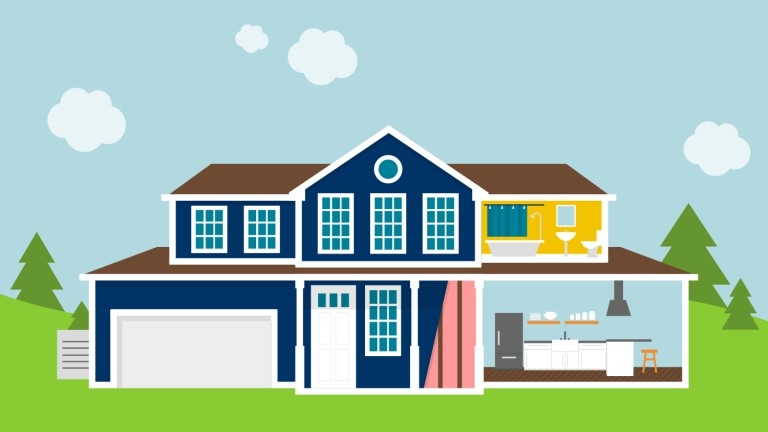The 4 Cs of mortgage lending
Have you been eyeing the housing market, wanting to buy a home but unsure whether you qualify for a mortgage? A quick assessment of your financial situation can give you a solid sense of where you stand.
Your ability to get a mortgage depends on four primary factors: your credit history, financial capacity, available capital and collateral. By evaluating each one, you can get a clear picture of your homeownership readiness. The four Cs can also help you identify areas for improvement and serve as your roadmap while you prepare to buy a home.
When considering your qualification for a mortgage, lenders look closely at:
1. Credit
Are you likely to pay back the loan? Your past borrowing behavior tells mortgage lenders how reliable you are at paying your debts. They examine two things: your FICO score and your credit report.
FICO score. Your credit score is a number that expresses your trustworthiness as a lender. FICO scores typically range from 300 to 850. A 740 or higher can help you qualify for the best interest rates; most loan programs require at least 620. You can improve your score by working on the different factors that influence it.
- Paying bills on time.
- Paying down balances.
- Establishing a longer credit history.
- Keeping new accounts to a minimum.
- Showing a healthy diversity of credit types.
Credit report. Your credit report is a detailed account of all the factors that make up your credit score. Negative info stays on your report for 7 to 10 years, while positive accounts show up only as long as they remain open. Check your credit report periodically to make sure everything is correct, including:
- Identifying info
- Payment history
- Employers
- Credit inquiries
- Bankruptcies
- Judgments
2. Capacity
Can you afford to pay a mortgage? Lenders assess your capacity by calculating your debt-to-income (DTI) ratio. That’s all of your monthly debt payments, plus the new mortgage payment, divided by your gross monthly income.
The ability to buy a home can hinge on this ratio, since it directly impacts both your loan amount and your ability to pay it back. Most lenders have hard limits on how high it can be, and these can vary. In general, your DTI should be 45 percent or less. That means you should be spending less than half your monthly income on loan payments.
You can improve your debt-to-income ratio by paying off some of your debts before applying for a home loan — although you might want to avoid closing any accounts, which could temporarily drop your score. Increasing your income also helps.
3. Capital
What resources can you tap to pay your mortgage? A steady income is essential, but lenders want to know you have other assets you have at your fingertips. Your capital includes all of your readily available funds, properties, retirement accounts, additional investments and other assets you could potentially sell for cash.
It’s especially important to build up your savings before buying a home. The more you can sock away, the better off you’ll be — both on paper and in reality. At minimum, you’ll want:
Down payment. Down payments typically range from 3 percent to 20 percent of the home’s purchase price, although some loan programs don’t require any money down at all. A larger down payment could net you a lower interest rate, though, so it pays to save up.
Reserve funds. As a homeowner, you’ll need to be prepared to juggle annual home maintenance costs, estimated at 1 percent of the home’s purchase price, along with any other emergencies that come up — all while making you monthly mortgage payment. You should have at least 2 months’ worth of reserve funds on hand before closing.
4. Collateral
What’s securing the loan? Your collateral is the asset you’re offering in case you default on your mortgage—in other words, it’s your home. Lenders want to know your house is worth enough to cover the cost of your loan.
Before closing on a home, you’ll need to have the property appraised to make sure its value justifies the amount you’re borrowing. Your loan-to-value ratio — the amount of your loan divided by the home’s value — determines the level of risk your lender is taking on. This is where a larger down payment comes in handy.
Keep in mind, however, that the appraisal is different from an inspection. The appraisal simply confirms the market value of the home. If you want to know what condition the house is in, you should get an inspection; your realtor can advise you in this area.
By now you should have a pretty good idea whether you’re ready to take on a home loan. The next step is to get pre-qualified. Even if you’re not quite there yet, we can help you make a plan to get there.


